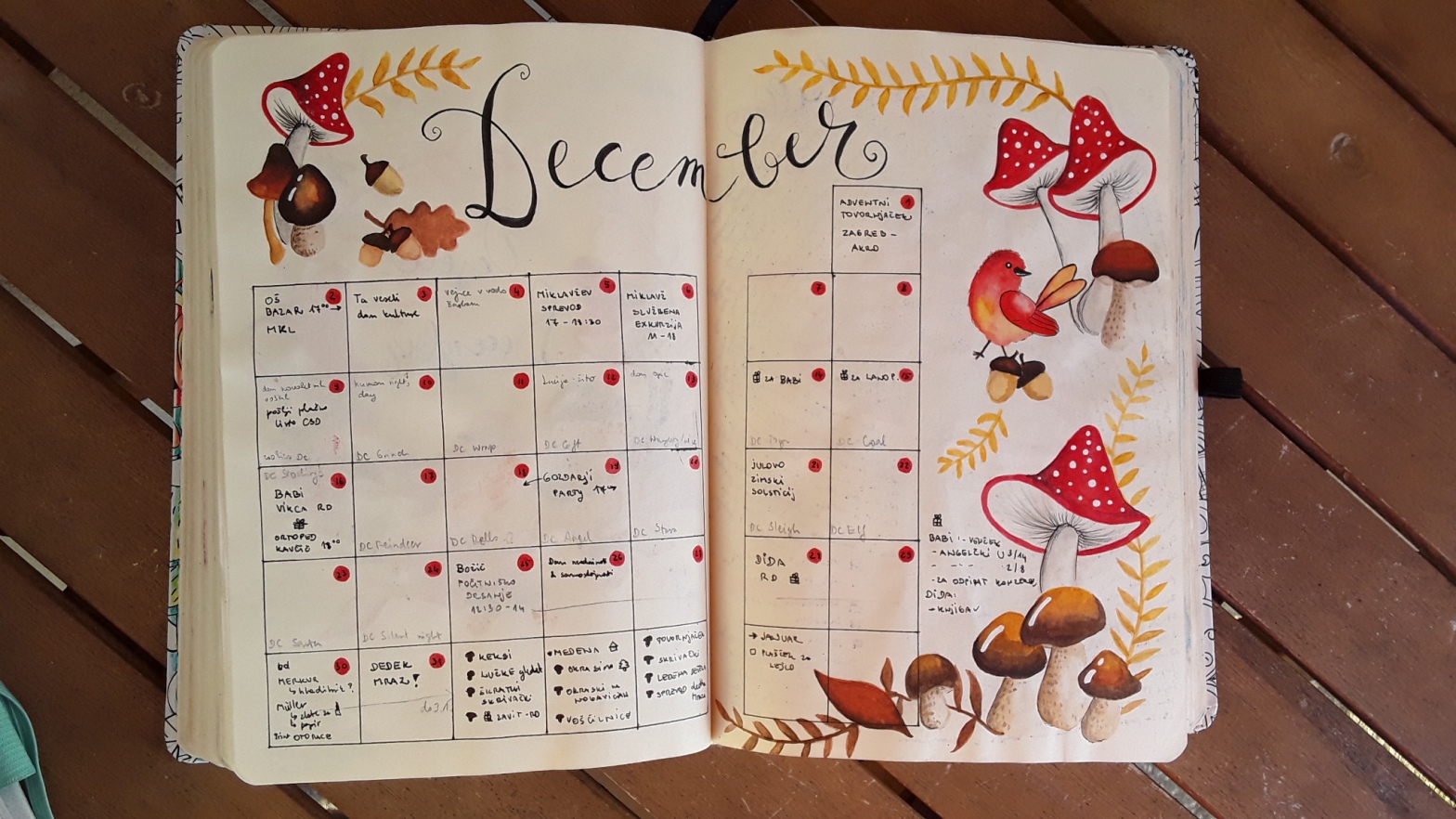Here are the key components of a bullet journal and my thoughts on why I love them or don’t use them and why some people find them beneficial.
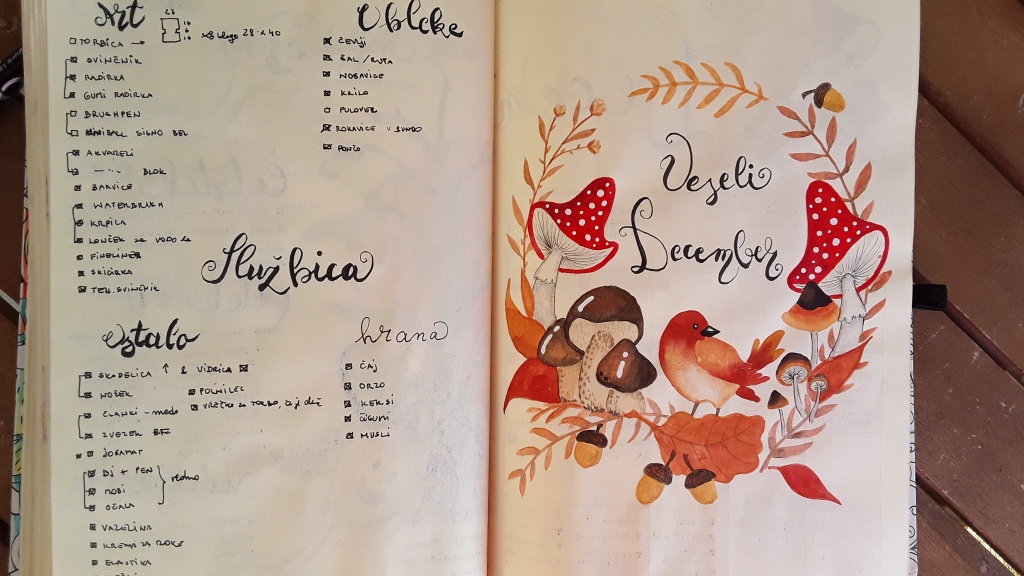
INDEX
When I started, I used the system as it was intended with the index and I needed it for that kind of use. But I really hate finding things in indexes (wherever they are; I am really really bad at searching for words and numbers on the page or finding people in the crowd – I can hear a particular voice from the crowd noise no problem, though – funny how our brains work).
So now I found a way to bypass that – I use the front of my notebook for the future logs and the back for the lists – there are not that many that it would be a problem to flip through when I need to find one and I don’t have to search for them with a numbered page – it is certainly faster for me because as I said – I’m lousy at that (I have to highlight a row in Excell every time I work on it:D) – a professional accountant or translator wouldn’t have that problem;).
I also found out that writing an index page is a real drag for me – I just don’t enjoy it – so I don’t do it anymore:). It totally works for the majority of people, though. And it’s a must if your lists are all over your bujo – there’s no way you’d flip through all of that and I still use them in my old bujos where I used the original system – it requires it – I just like my adapted version better. My daughter prefers to write the lists as she goes not at the back for instance.
If you have dyslexia or you are like me and just suck at that – this is an elegant way to not deal with the index;).
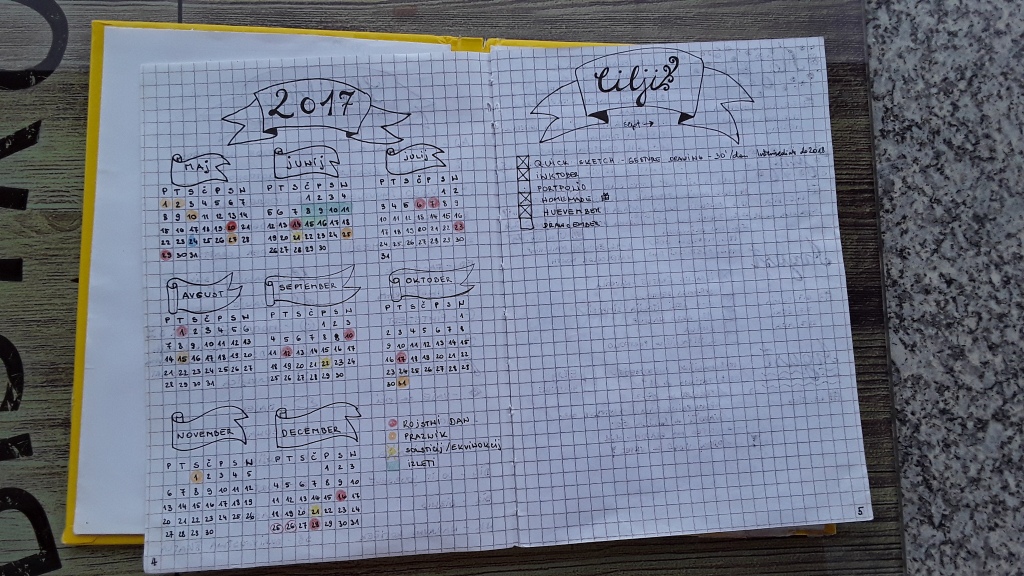
KEY / LEGEND
This is another key component that I don’t use. Ryder advises you to mark tasks with a square, events with the circle and notes with the dot and use the star to make the bullet a priority and jot these symbols in your key list. I have found out that I love my symbols more and they are intuitive for me (star or asterisk (*) has always been a symbol for something optional for me and always will be, while an exclamation point (!) is a symbol for something urgent and/or important).
I also have quite a busy personal life (well, 3 kids;)) so I like to distinguish between stuff I have to do for work and for other life – I used to use two bullet journals and just keep the job-related one in the office /lab (when it served as a laboratory log) and it was ugly as hell, no doodles, just pages of very ugly handwriting – but it was probably the closest to the “real bullet journal” the way Ryder uses it – daily write while you do tasks what you do and why and every day in the morning you also write what you have to do. Without all the keys, and legends, though – I just used post-it notes and markers to mark the spreads that I needed most. And I colour coded with highlighters. But for my personal use, I found out I only use it if it’s pretty.
Now that I currently work from home, I like to have just one notebook with everything in it and I use two symbols – square for work and circle for everything else. And a triangle is for events when I have to be somewhere etc… I found out that if I use my symbols, I never ever check the key and if I don’t use my symbols I’m confused all the time regardless of the key:D. So for me, it’s best to just stick to what is intuitive for me and omit the key altogether. But I did have a very strong symbol list in my head since university – I used to jot down things in half stenographic way – I love symbols – they are quick and don’t take much space so I use them a lot. If you don’t have a very strong sense of what a certain symbol would mean for you, you probably would benefit from the key.
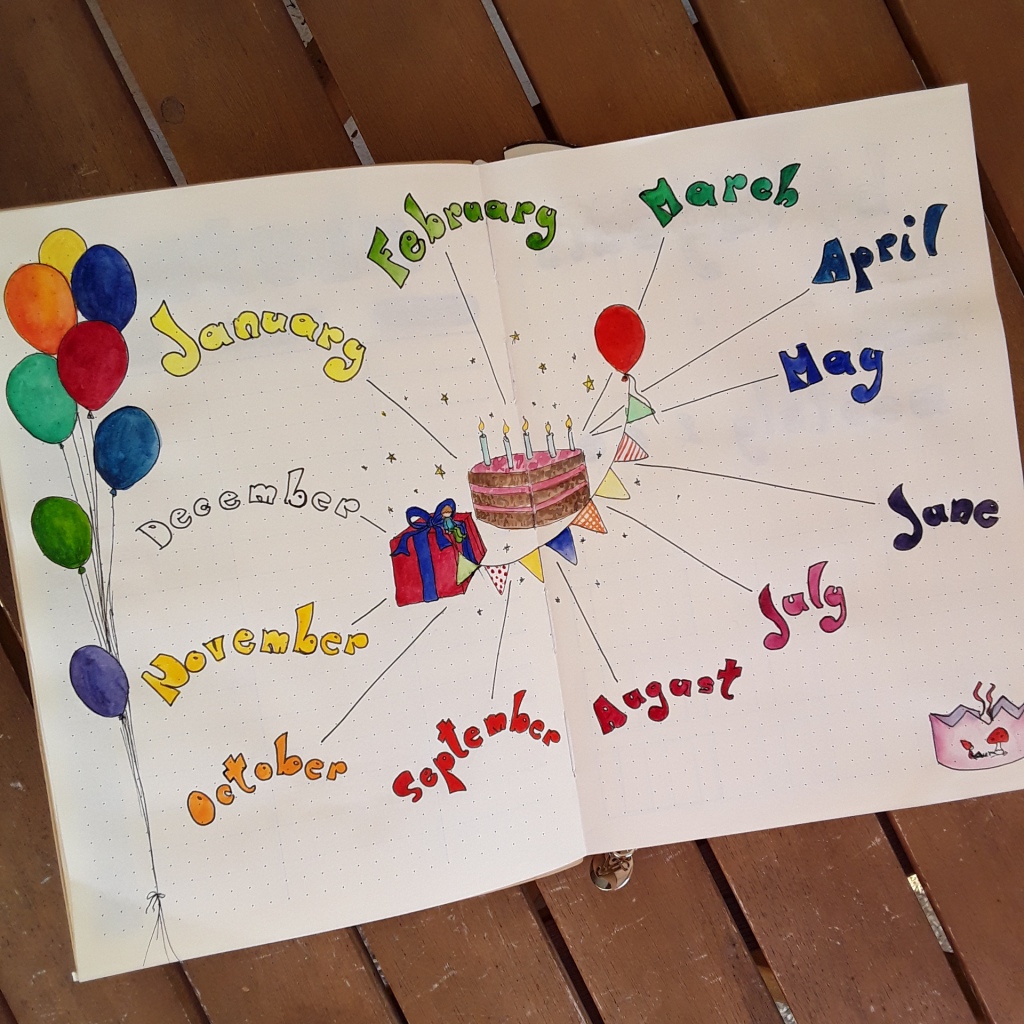
LISTS / COLLECTIONS
Now, lists are another story! I love lists! I have always loved lists! I had them everywhere! And now they are in my bullet journal and for me, they are the most useful part of the journal! Ma favourite and definitely most used lists are:
– GIFT IDEAS for my family and others (2 spreads / 4 pages at least:D)
– WISH LIST – the reverse of gift ideas – things that I wish for so when somebody asks I can give them a proper answer not just “I just want everybody to get along” that no one was asking for;).
– SEWING IDEAS – a collection of clothes my kids wished for from Ottobre magazine (or some other place but I really love Ottobre:)) and what fabric I intend to use (if I have it already or if they wished for something specific). Lately, I have also put down a page of “sewn” because I always feel like I have done nothing because that “sewing ideas” list always gets bigger and I can’t cross of that many things and I also end up doing lots of things that are not on the list… So I have another spread so I can see that it’s not how it seems. I am just about to get a wonderful sewing place (not in the craft room/studio!) so I hope it will be very full soon:). It’s my dream sewing place!
– SHOPPING LIST: I don’t have the shopping list for groceries in my bujo – that wouldn’t be practical for several reasons: sometimes my alpha male goes to the store alone and sometimes somebody else finds something missing and it’s best if we all can put it in and there are just too many items and things change too quickly – so we have the Keep app for that (and it goes with us to the store and can be updated from home while somebody is in the store;)). But for everything else I have a spread because I often don’t have my phone near me when I create or work and because I go to those special stores even more rarely than for groceries… You see, you don’t HAVE to use the same system for everything – use the system where it’s useful:).
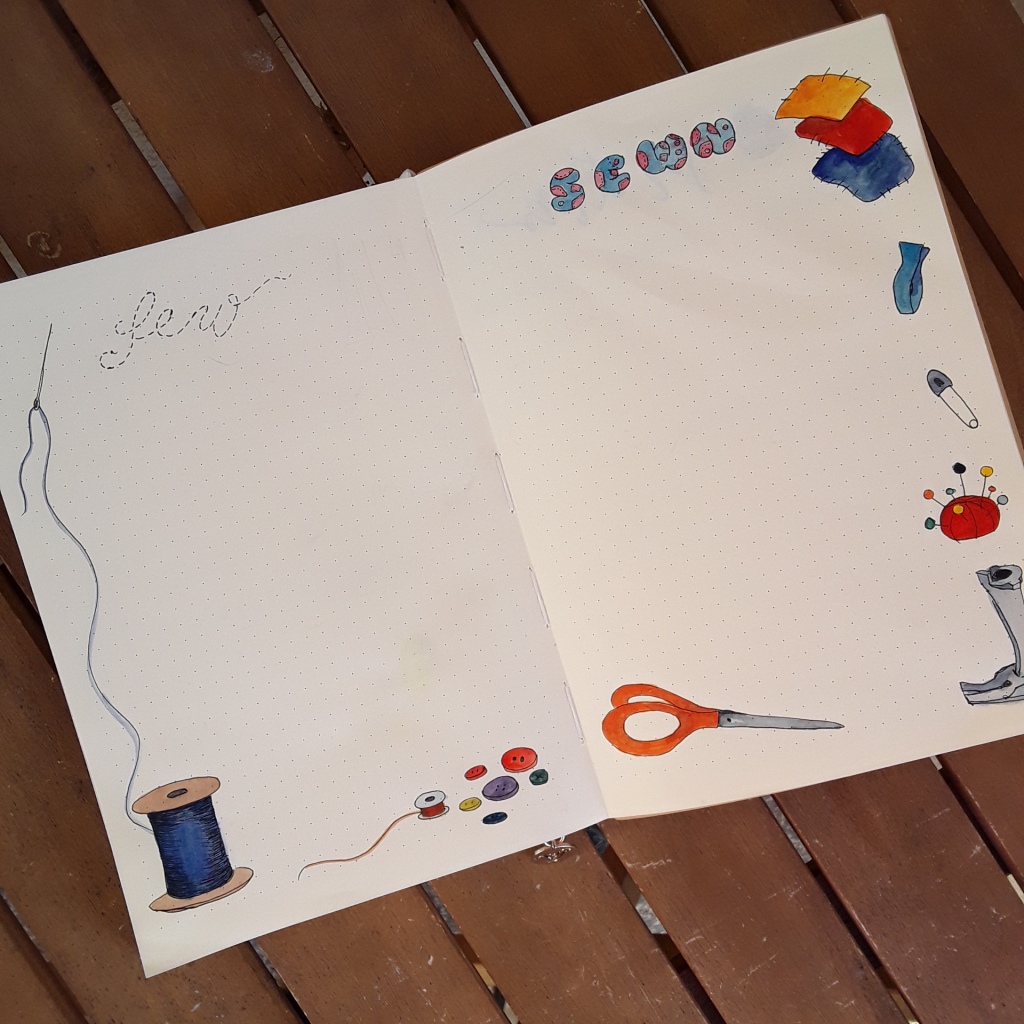
TRACKERS
I have a love-hate relationship with trackers. I have used them a lot – and they actually work! So why would I not just love them? Because… I sometimes (like all the time) choose too many things to track (big things, like drawing poses for 30 minutes every day, not flossing;). And then because tracker works for me I get burned out.
So if you are like me, limit yourself! 9 things that take more than 3 minutes to complete is ENOUGH! Yes, even if you don’t plan to do all of them every day. Just trust me on this. Ok, you can put 12 if you only plan on doing at least 3 just weekly and want to track that. But don’t burn yourself out!
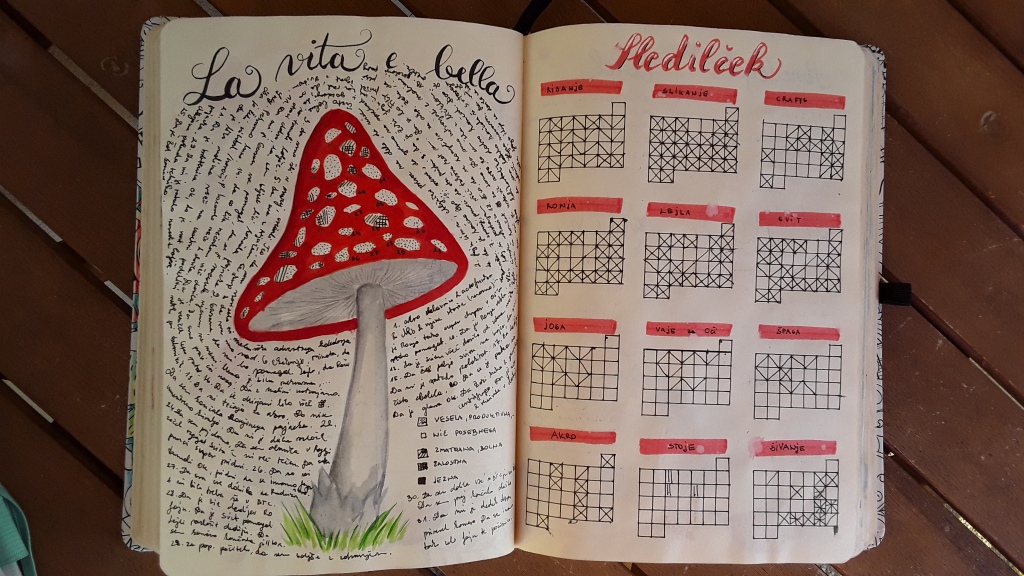
FUTURE LOGS
Now, this is the meat of a bullet journal. Before we go any further – spread, layout, set-up and log are all one and the same in my book;). We make a spread for the year, for the month and for the week and/or day. Each has its own characteristics.
– YEARLY: the goal is to see the whole year at a glance (or 2 or 3 glances – I found out that I much prefer to have a bit more space for my month – as I’ve mentioned in my YT video – so I make a spread with 4-6 months and just flip the page when needed). My alpha male really liked the whole year at a glance, though (but he has no problem looking at excel sheets, either:D). Watch the video and choose whatever works for you:).
– MONTHLY
This is the spread that I ALWAYS make – even if I don’t do the weeklies! It is really really practical! You can see everything in the whole month and plan accordingly (which presents to make, how many cakes to bake, where do I need to go and when, what can I combine, etc…) I highly encourage you to try this one – even if you don’t do anything else! It’s different when you have a small 2×3 cm (about 1 square inch) space and you have to prioritize! You get very clear on what needs to be done and what can wait;).
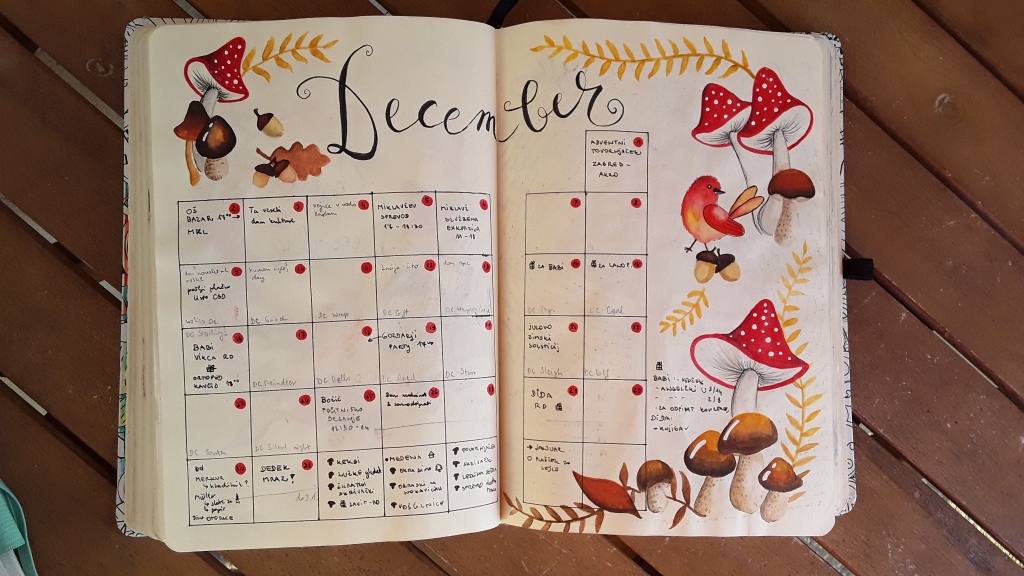
– WEEKLY: my favourite and most used spread. I love it because I have more space for my artistic endeavours, it is way more versatile and I get to try new layouts and I have enough space to fit everything important or a little less important;) on it. I usually divide my space into 8 parts and use 7 for the days and one for the to-dos for this week. Because there are things that need to get done in that week but I don’t know when will I be able to cram them in… I found that makes me less overwhelmed than if I try to dedicate time for it but there is a “family emergency” (read: kids need mediation or they will fight like hell:D) or something else comes up and I didn’t do it that day and I have to rewrite it and I feel like a failure. I don’t particularly like that feeling so I love my gentle weeklies;). There are fewer things that I don’t get to but really have to do in a week than they are in a day. Maybe I’m strange but this works for me.
– DAILY: I don’t actually use them. I know they are supposed to be the best etc… but I found out if I have the whole page for my day (or I am not limited in any case) I will just fill it with tasks that would take a week to finish:D. Yes, time managing is my eternal issue (I’m typing this at 1 am… after my acro training:D)
I don’t journal in my bullet journal either. I know Ryder says that’s the main part but there are many practical reasons for that:
– I am not comfortable with sharing ALL of my thoughts with just everybody – and I take my bujo everywhere and open it everywhere… I like to keep those things separate.
– It would be much more difficult to find a page if I were to write as much as I write when I get to it… in the middle of my notebook. I like to keep my to-do’s separate from my thoughts on life;).
– Bullet journals are expensive! If you do it in a normal notebook, ok, it’s the same – but I really like the hardcover for the bujo and I love the dotted versions and those are not cheap! There’s no way I’ll scribble some thoughts in this beauty! It has a dedicated use and I use the most normal school notebook for my thoughts so I can be really relaxed and it doesn’t feel precious.
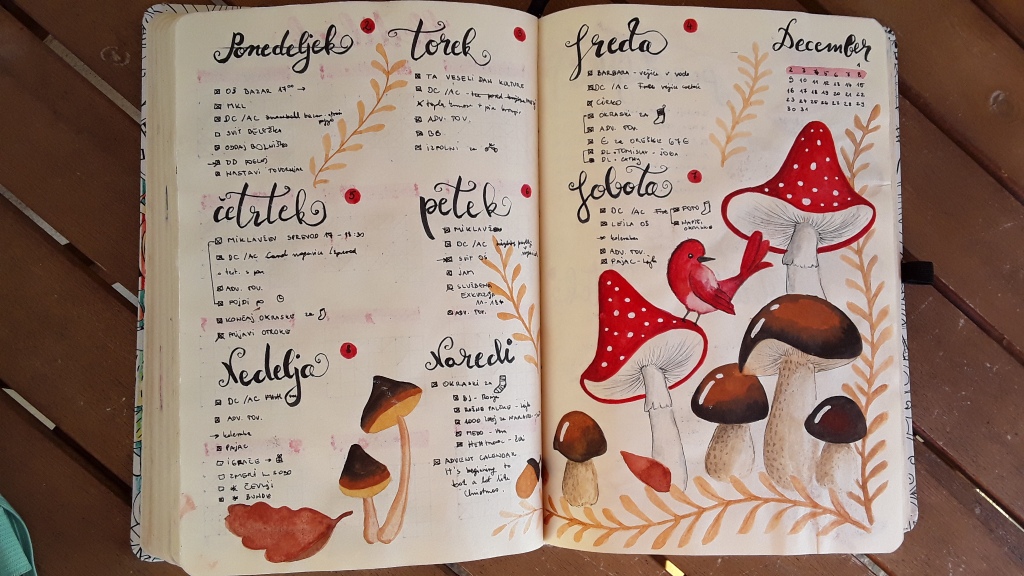
If you want to see the original method, it’s here. I am in no way trying to say it’s not great – I just adapted it for my silly brain;). And I’d encourage anyone else to do the same – because we are different – to some trackers would cause anxiety, they would motivate others and they would not work at all for the third group (although that’s a smaller group, according to the research).

